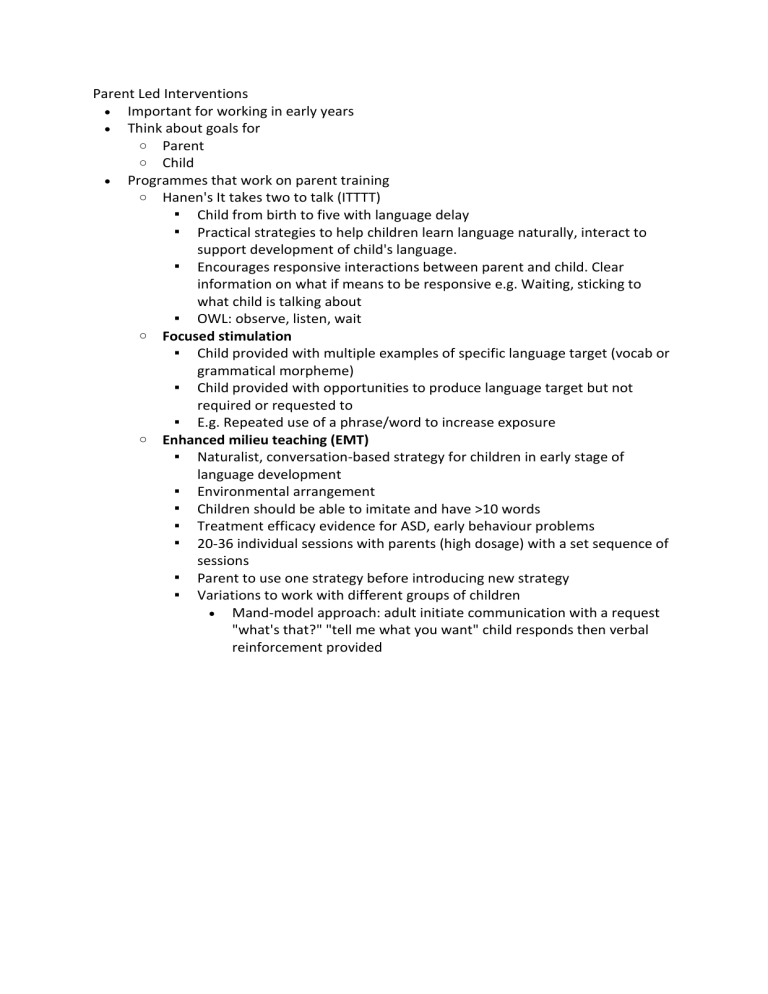
Parent Led Interventions Important for working in early years Think about goals for o Parent o Child Programmes that work on parent training o Hanen's It takes two to talk (ITTTT) Child from birth to five with language delay Practical strategies to help children learn language naturally, interact to support development of child's language. Encourages responsive interactions between parent and child. Clear information on what if means to be responsive e.g. Waiting, sticking to what child is talking about OWL: observe, listen, wait o Focused stimulation Child provided with multiple examples of specific language target (vocab or grammatical morpheme) Child provided with opportunities to produce language target but not required or requested to E.g. Repeated use of a phrase/word to increase exposure o Enhanced milieu teaching (EMT) Naturalist, conversation-based strategy for children in early stage of language development Environmental arrangement Children should be able to imitate and have >10 words Treatment efficacy evidence for ASD, early behaviour problems 20-36 individual sessions with parents (high dosage) with a set sequence of sessions Parent to use one strategy before introducing new strategy Variations to work with different groups of children Mand-model approach: adult initiate communication with a request "what's that?" "tell me what you want" child responds then verbal reinforcement provided CAS Nuffield Dyspraxia Programme (NDP-3) o Ages 3-7 (12 max) o Based on motor learning theory Aims to build speech from single sounds, to words, to sentecnes o Address linguistic issues by creating contrastive systems at each syllable structure level o Primarily breakdown in motor planning and programming = motor plans part of stored lexical representations and consist of series of gestural targets for articulators to achieve acceptable production For example, correct production of word <tea> would involve, intiating airstream, closing velopharynx, move tongue to alveolar ridge, release closure, move tongue body posture, spread lips and initiate voicing o Motor planning: outline output process to which new motor programs can be created Store phonological units that can be combined to create new motor programs for unfamiliar words (practice on real words) o E.g. Child replaces /s/ with /t/ in words - new motor programming needed to help produce blend /s/ with /i/ New motor program created, practice to establish program in stored representations Use of minimal pairs o Motor planning also occurs with crating sentences Correct sequence, appropriate grammatical structure and prosodic features o Bottom Up approach Phonemes -> CV > CVCV -> CVC -> multisyllabic -> consonant clusters > phrases and sentences -> connected speech o Aim to address Articulation of individual consonants and vowels Sequence sounds Maintain segmental and suprasegmental accuracy o 3 sections: Single sounds Words of diff phonotactic structures (CV, VC, CVCV, polysyllablic) Combine words in phrases and sentecnes




